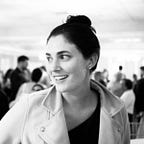The pandemic has shown that many Americans can prioritize “us.” But once we’re vaccinated, will that end?
When Americans first learned about the novel coronavirus, there was a widespread belief that only elderly people and people with underlying health conditions were at risk, and so many of us continued about our lives as usual, reaffirming this country’s ageist and ableist attitude toward disease. But then, seemingly overnight, the gravity of the situation set in; young, healthy adults were being rushed to hospitals and put on ventilators that were dwindling in supply; people were losing loved ones left and right.
My grandmother passed away from COVID-19 in May, surrounded by healthcare workers in head-to-toe protective equipment. Her death was unexpected and impersonal, her final words exchanged over the phone — a far cry from the bedside goodbye she would have wanted, holding the hands of her children and grandchildren.
These widespread, deeply upsetting personal experiences have, in my opinion, made us reevaluate what we can do, as individuals, to protect others from disease. Moments of fear and heartache have made us more open to the idea of keeping our fellow humans safe, regardless of age and health, and that idea has been regularly reinforced by organizations like WHO, CDC and by universities — for example Duke University Health System — who’ve emphasized the importance of staying home, social distancing, and wearing masks to, above all else, keep others safe.
These widespread, deeply upsetting personal experiences have, in my opinion, made us reevaluate what we can do, as individuals, to protect others from disease.
As a science writer I’ve spent most of the past year talking with virologists, immunologists, epidemiologists, and public health experts, all of whom have emphasized the importance of working together to save lives, whether that be by wearing masks and staying home as much as possible, or by sharing data that could speed up vaccine development. Scientists across the world have left their academic silos and set aside their individualist agendas to form collaborations with competitors and share data across continents. As a former academic who frequently witnessed researchers in the same lab withholding data from each other for fear of being “scooped,” I can personally attest to the exceptionalism of this situation. These collaborations are what have made it possible for high-risk healthcare workers to receive the Pfizer-BioNTech vaccine, and for two additional COVID-19 vaccines to be closely behind.
Although far from true for all Americans, this pandemic has shown that many have the capacity to prioritize “us” over our individual selves. But what happens after we’re vaccinated? Will this reformed thinking continue, or will we revert back to our early-2020 individualist mentality?
I’m cautiously optimistic that we can make such a big change but also hesitant to even speculate because we’re in mostly uncharted territory. We are in an age where we know more about disease, and how it spreads, than ever before. Press briefings with world-renowned scientists are at the tips of our fingers, and scientists, politicians, actors, and influencers have flooded our newspapers, television screens, and social media urging people to wear masks and social distance to keep everyone safe. The ease of sharing information means public health experts have a broader reach, but so do conspiracy theorists claiming the pandemic — that has stolen over 300,000 American lives — is a hoax.
It will take time to gather data on if, after being vaccinated, individuals are making decisions with the health of all of us in mind, so in the meantime I’ll be looking for positive indicators, like people continuing to wear masks, not traveling into work when they’re sick, keeping their vaccinations up-to-date, and getting a flu shot every year.
A study released just a few months before the pandemic showed that, in the US, 90% of employees go into work when they’re feeling under the weather. Staying home when sick is an obvious way for people to show they care about the health of others, but making that change will take the willingness of both individuals and their employers. In the 2019–2020 season, around 22,000 people in the US died of the flu. In 2018–2019, deaths were estimated at around 34,000, and the previous season at about 61,000. The data are clear: every year the flu kills tens of thousands of people, most of whom are older, yet consistently less than 50% of Americans over 18 get the flu shot. If we’re thinking about others and not just ourselves, we should see that percentage go up, starting in the 2020–2021 season.
This pandemic has brought with it unbelievable heartache, but it has also shown that so many of us have the capacity to care about others, regardless of their age or health. Seeing ourselves as members of a global community who can be thoughtful about how, and when, we move about the world gives us the power to save lives in years beyond the pandemic. Let’s use that power.
